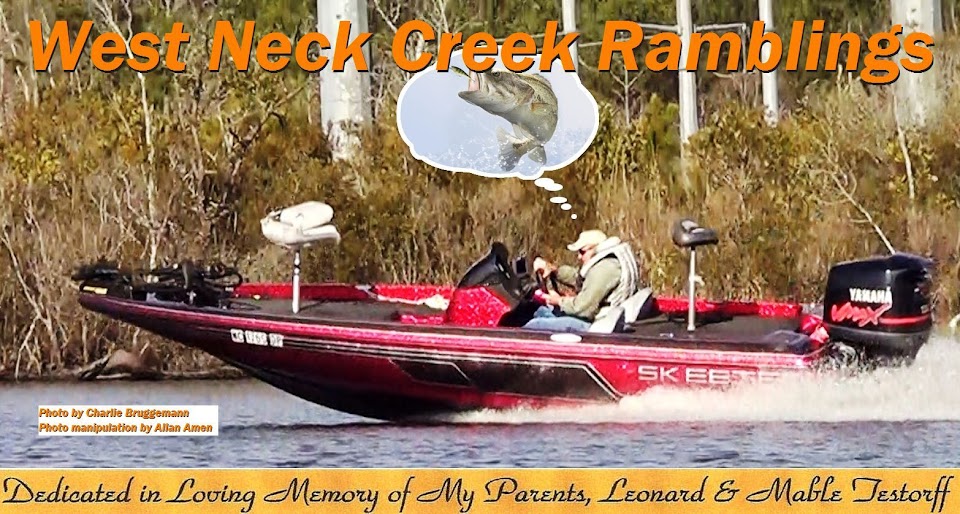That's the sort of question I've been dealing with for a few weeks now, ever since I got serious...yes, again...about my worm fishing, specifically, my Senko worm fishing.
Here's my dilemma. I'm getting lots of bites, but on many occasions, it's as though I become hypnotized by the words of that old Ella Fitzgerald tune titled "Undecided." You know the one I'm talking about. It starts off with "first you say you do, and then you don't, and then you say you will, and then you won't, you're undecided now, so what are you gonna do?"
For example, I sometimes just feel a tick in my line as the worm is falling. Other times, I see the line moving off in one direction or another. Still other times, I feel pressure. And on still other occasions, it feels like the fish keeps picking the bait up, then dropping it...repeatedly. Meanwhile, I sit there, trying to decide what to do--above all else, of course, not wanting to snatch the bait away from the fish, 'cause you never know when it might be a big 'un.
When I reel down to remove any slack in my line, I like to have a strong conviction it's time to set the hook. Too often, however, I feel like the fish just doesn't truly have the bait in its mouth yet. I then lapse into a tit-for-tat game until I can't stand it any longer and finally just close my eyes and swing for the fence. And most times, the fish is there.
To my chagrin, however, I sometimes find that my delay in setting the hook simply has resulted in the fish swallowing my Senko (all the way to his belly button), including the 4/0 wide-gap hook embedded in it. Unlike some anglers I've read about online who casually refer to bass fishing as a "blood sport," I instead get a really ugly feeling when I gut-hook a bass. I get the same kind of feeling when a crankbait hook accidentally catches the eyeball of a bass.
Until day before yesterday, I had subscribed to the school of thought that the best thing you can do for a gut-hooked bass is to pull out all the visible soft plastic, clip the line as close as possible to the hook's eye, and release the fish (and hope that he lives to be caught another day). The theory of some is that the hook then will rust out over time, and in bygone days, that theory may have been accurate. But as the late-Doug Hannon once reported (during a conversation with angler, fisheries biologist, and writer Ralph Manns), modern hooks don't rust fast enough, even in salt water. He suggested that the shank of a hook, if pointing up the throat of a bass, will act like a lever or trap door that prevents swallowing.
Hannon's observations subsequently were scientifically verified by John Foster, recreational fisheries coordinator for the Maryland Department of Natural Resources. He and a team of researchers held some throat-hooked stripers from Chesapeake Bay between 16 and 28 inches long in half-strength seawater so that the hooks had ample opportunity to rust away. Size 1/0 and 2/0 stainless steel, bronzed, nickel, tin, and tin-cadmium-plated hooks were hooked in the top of each fish's esophagus, with an 18-inch length of line connected to each one.
After four months, 78 percent of the hooks still were embedded. Cadmium-coated hooks poisoned 20 percent of the fish, and production of these hooks was stopped. Bronzed hooks were less likely (70 percent) to be retained than tin-cadmium (80 percent), nickel (83 percent), or stainless steel (100 percent) hooks. In a second test, the line was clipped at the eye of the hook. One-hundred percent of the stainless hooks again were retained, while 56 percent of tin, 76 percent of bronze, 84 percent of tin-cadmium, and 88 percent of nickel hooks remained. Fish mortality was greater when all line was trimmed. Foster suggested that the lengths of line hanging from a fish's mouth kept the hook shank flat against the side of the esophagus, thus allowing food to pass. Without the line, food could move the hook and close the throat.
Hooks rusted slowly in stages, and the bend and barb became smaller very gradually. Stripers formed scar tissue around embedded hook points, a typical reaction of body tissue to foreign matter. Foster noted, however, that once the scar tissue formed, hooks became more, not less, difficult to remove. Months after fish were hooked, infections sometimes developed around points, causing some deaths.
Based on his research, Foster recommended anglers carefully remove even deeply embedded hooks. If the hooks cannot be removed, then it seems better to leave about 18 inches of line attached. "Perhaps, someday, these findings will reach catch-and-release (C&R) anglers, the biologists who are researching C&R and publish C&R guidelines, as well as TV anglers who teach by their example," Foster said.
One option, as he noted, is for anglers to carry strong wire-cutting or needle-nosed pliers to cut off or crush down barbs, so that a hook shank rotates more freely during a removal operation, as depicted in either of the two accompanying videos:
https://www.youtube.com/watch?v=3RGTL9RBG2s
https://www.youtube.com/watch?v=9FIJ74-79pk
Another option that I found many anglers supporting is simply to set the hook the moment you first feel a fish, or what you think may be a fish...period. Your hookup and landing to bite ratio may suffer with either option in the process, but most agree that you'll likely have a lot fewer gut-hook issues to deal with by doing so.


















































